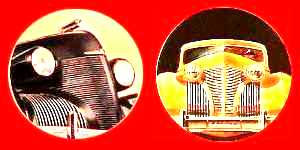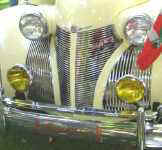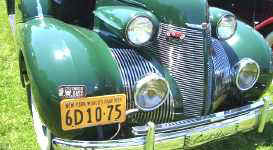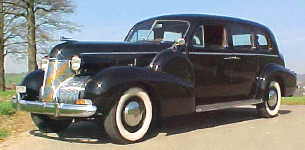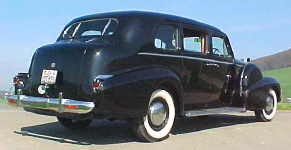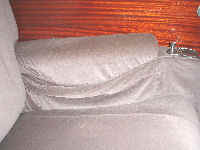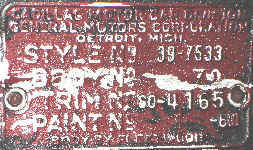[ last update:
04.17.2014 ]
The (new)
Cadillac Database©
Photo Pages
Cadillac
1939
Return to The (New)
Cadillac Database© Index Page
or go back to the Cadillac photo index page to pick another
year
Unless otherwise specified all photos
and illustrations are from Yann Saunders'
collection of Cadillac photos, advertisements and product catalogs,
reproduced courtesy of the Cadillac Motor Car Division and the Cadillac-LaSalle Club
Apart from the La Salle models for 1939
and the bespoke V-16 line that remained basically unchanged
from 1938 until production ceased in 1940 (and which you may admire by clicking on the
appropriate underlined text in this paragraph), Cadillac offered three other distinctive
series of models in 1939. These were the entry level Series 61, the mid-level Series
"Sixty Special" and the plush and splendid Fleetwood line. The various models in
these three lines are illustrated below.
The Cadillac "Sixty Special" and Sixty-One" models
were combined and described in two separate brochures. One was a small (6x9")
2-tone, 12-page catalog, shown below.
The other was a larger (9½x12½"), more
luxurious, full-color, 16-page catalog with a black cover depicting an olive green
"60 Special" sedan, at night, with its doors open and a lighted interior.
The superb "Fleetwood" models were described in a
lavish, spiral-bound catalog, measuring 14x16½" and comprising 32 pages. The
blue-gray cover was titled "Cadillac Fleetwood"; it was
embossed with a golden crest that said it all. "Presenting
America's Most Distinguished Motor Cars", read the title page. These were "The
New Cadillac Fleetwoods in Twelve Magnificent Body Styles". The
copywriters went on to assert that "...there is no longer any question as to
motor car supremacy, for Cadillac stands uniquely alone". Is it
surpassing, therefore, that these cars should have been built in 1939, the year of my
birth? I ask you!
A definite change of styling will be witnessed in
the frontal area of these new models, compared with the narrow, vertical look of preceding
Cadillacs. The new front grille wraps around the nose of the car; it is made up of
fine, horizontal, narrowly-spaced chrome strips with a single vertical divider bar.
On either side of the grille are two decorative and so-called "catwalk" grilles;
the narrowly-spaced bars on the latter are placed vertically, artistically offsetting the
horizontal theme of the grille. The sleek look of these new models was
accentuated by the very long tear-drop headlights mounted high on the hood side panels.
Running boards had begun to disappear in 1938, with
the launching of Bill Mitchell's brain child, the first Series
"Sixty-Special"; in 1939 they remained an option on some models. The rumble-seat
became a thing of the past; mothers-in-law got to stay at home! Two-seater
styles were fitted with a small, full width auxiliary seat or two small, folding
side-mounted seats.
Once again the easiest way to distinguish the 1939 models from the
rest is to look at the front clip with its decorative, narrowly-spaced catwalk grilles.
Although that theme was used again in 1940, the later models featured distinct
spaces between the catwalk grille bars.
Additional information on the 1939 models and the
related sales literature may be found in The
(New) Cadillac Database© sections entitled "Descriptions
and Specifications of Cadillac Cars 1938 - 1945", "Cadillac and
La Salle Sales
Literature 1935 - 1939" and
"Dream Cars of 1937 to 1939" Further
recommended reading includes:
The "Standard Catalog of Cadillac, 1903-2000" edited by
James T. Lenzke, © 2000, published by Krause Publications, Inc., 700 E. State Street,
Iola, WI 54990 [ISBN #0-87341-925-1, Library of Congress #91-61301].
The artist's views, below, are arranged according to Series and to
the rarity of each model, in ascending order, within that Series.
Series 61
126" wheel base chassis
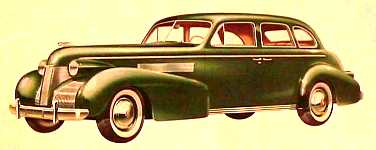
Series 61 sedan, style #6119
4,051 units were built; 96 of these were knocked down for export;
a further 30 units were built with a partition and division glass,
these were style #6119-F; in addition, 43 cars were fitted
with the new sun-roof; these were given style #6119-A
|
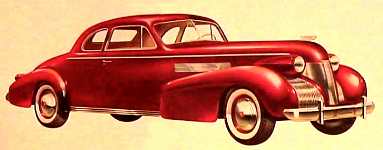
The Series 61 coupe, style 6127
1,023 units were built
|
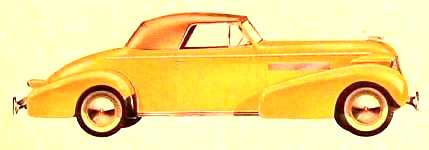
The Series 61 convertible coupe, style #6167
350 units were built
|
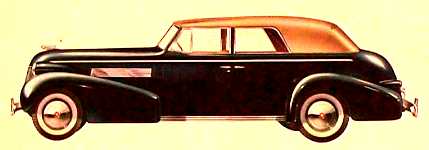
The Series 61 convertible sedan, style #6129
a scant 140 units were built
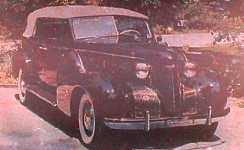
This poor photo of a survivor is from
a Kruse auction catalog of the eigthies
|
Series 61, Commercial chassis
156" wheel base chassis
Cadillac continued to supply the so-called
"commercial chassis" to independent coach builders of which the majority were in
the ambulance and funeral trades. In 1939, 237 units were delivered
Series 60 "Special"
127" wheel base chassis
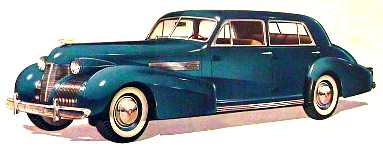
Series 60-S sedan, style #6019-S
5,219 units were built of which 84 were knocked down for export
 
Front and rear passenger compartments are plush and
roomy
yet plain in design and functional in layout
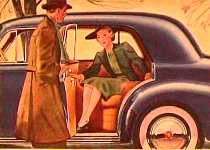 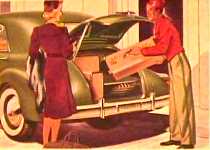
Ease of access, front and rear; capacious trunk area
|
| 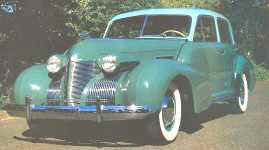  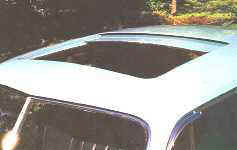
Introduced in 1938, the sun-roof was a popular option in 1939;
225 cars were thus equipped; these were given style #6019-SA
An additional 55 cars got both the sun-roof and a partition
and division glass; these had style #6019-SAF
Finally, seven bare 60S chassis were supplied to independent coach
builders
|
| 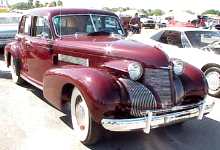 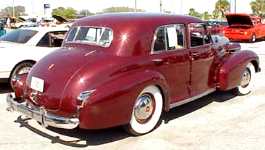
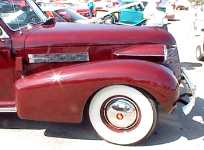 
This fine survivor was offered for sale on the
Internet in 2000
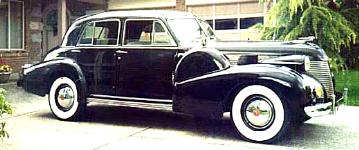
This other lovely survivor belongs to CLC member, Baxter Culver
|
Series 75, "Fleetwood"
141¼" wheel base chassis

The Series 75 sedan for 5 passengers, style #7519
543 were built
|
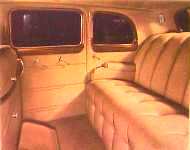
Rear seat of this sedan;
note the plain door panel design |
| 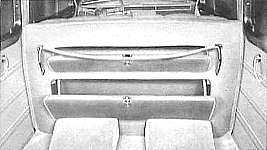
This style offered two large storage cabinets in the
back of the front seat
|
| 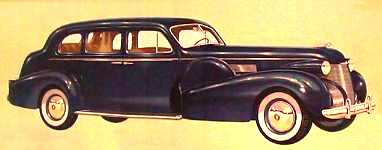
The Series 75 sedan for 7 passengers, style
#7523;
this car is similar in outward appearance to the limousine style [#7523, above];
412 units were built
|
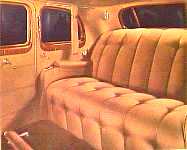 
Rear compartment design
is very similar to style #7519;
access was through wide doors at right |
 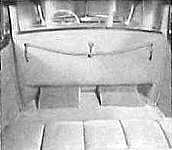
The Series 75 limousine for 5 passengers, style #7519-F,
looked outwardly similar to
the sedan style [#7519, above]; the only notable difference was the presence of a
winding
division glass in the partition; only 53 units like this one were built
|
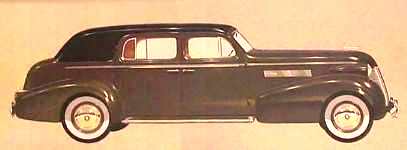
The Series 75 formal sedan for 5 passengers, style #7559; it
was very similar in outward appearance to style #7533-F, above,
but there was no auxiliary seating; 53 units were built
|

The rear seat of the formal
sedan with its discreetly
enclosed rear quarters |
| 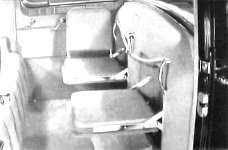
Although described as a 5-passenger car, it was
equipped with opera-type
folding auxiliary seats to accommodate 2 additional passengers on short trips
|
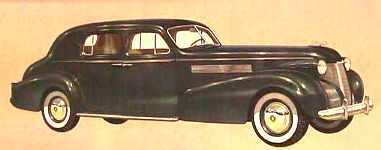
The Series 75 town sedan for 5 passengers, style #7539
51 units were built
|
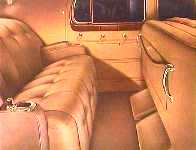
At each end of the front seat back,
are handy grab handles |
| 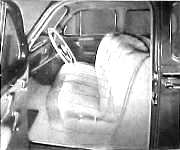 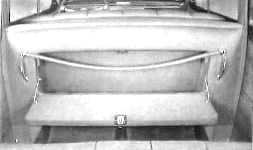
|

The Series 75 formal sedan for 7 passengers,
style #7533-F
44 units were built
|

Plush rear compartment offers
privacy of blank rear quarters |
| 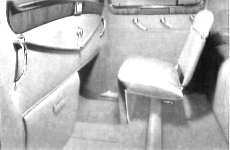
Comfortable auxiliary seats fold away into the
partition
|
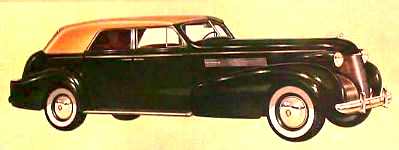
The Series 75 convertible sedan, style #7529
a sparse 36 units were built
|
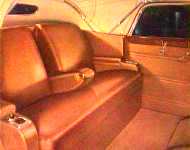
All-leather seating in this model
is plain and weather resistant |
| 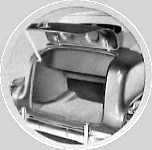 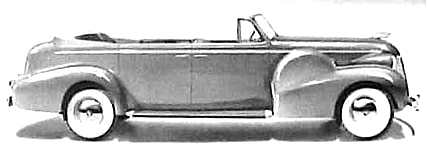
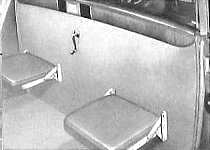
Fleetwood's large, convertible sedan featured a
partition with wind-up division glass between the front and rear
compartments; for short trips, two additional passengers could be accommodated on
the folding auxiliary seats
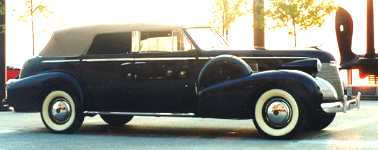
A superb survivor
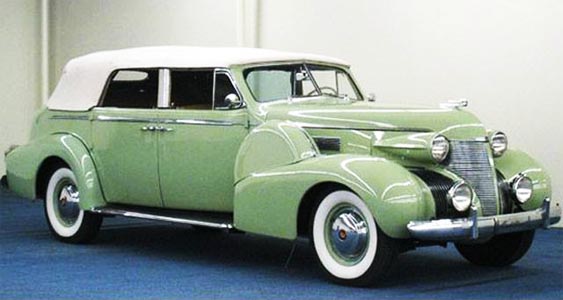
... and another
|
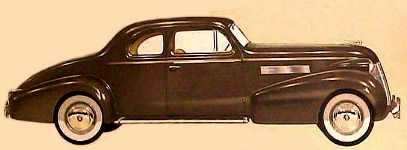
The Series 75 coupe for 2 passengers, style #7557
only 36 units were built
|
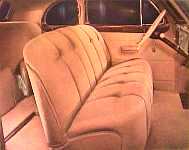
Coupe interior with two,
small, folding seats |
| 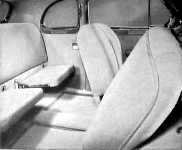
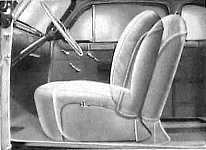
Opera-type auxiliary seats fold flat against
the bulkhead
for occasional luggage transport; front seat is adjustable
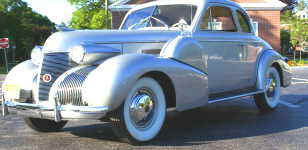
A survivor in beautiful condition
|
| 
The Series 75 business sedan for 8
passengers, style #7523-L [much like style #7523, above]
only 33 units were built; interior appointments were more functional and less
luxurious
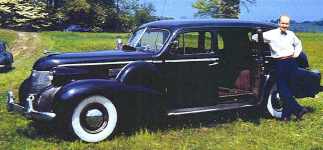
A survivor in the nineties
[ Photo: Hugh P. Smith, Jr, ]
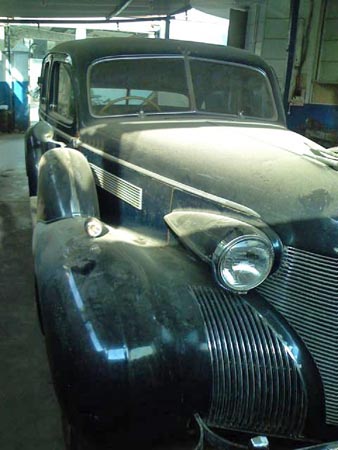
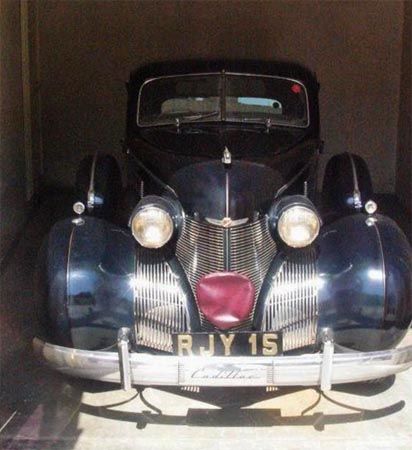
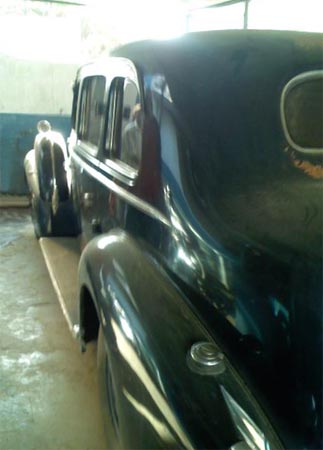
This RHD survivor, in India, was the
property of a Maharajah
|
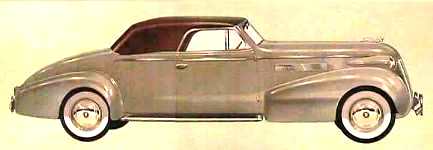
The Series 75 convertible coupe for 2 passengers, style #7567
only 27 units were built
|

Convertible coupe interior
with two, small, folding seats |
| 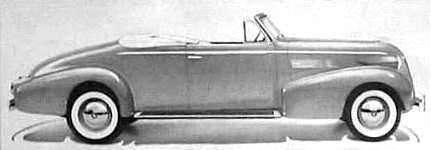 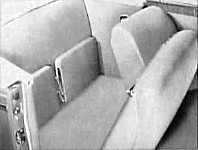
Left, the convertible coupe with top down; right, the
opera-type auxiliary seats
fold back against the bulkhead when not in use, leaving ample room for luggage

This beautiful survivor popped up on
Internet (adjusted with PhotoShop to remove spurious background images)
|

The Series 75 coupe for 5 passengers, style #7557-B
only 23 units were built
|
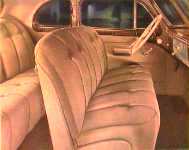
This coupe has a full-width
rear seat |
| 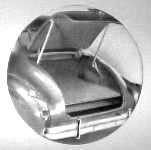 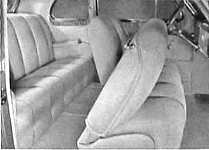
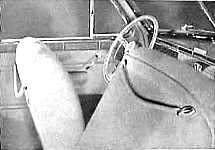
|
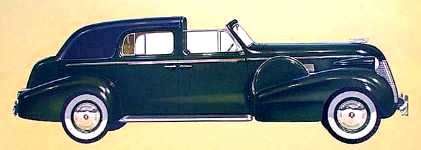
The Series 75 town car for 7 passengers, style #7553
only 13 units were built
|
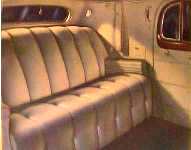
Most "75" interiors were
as plush as this one |
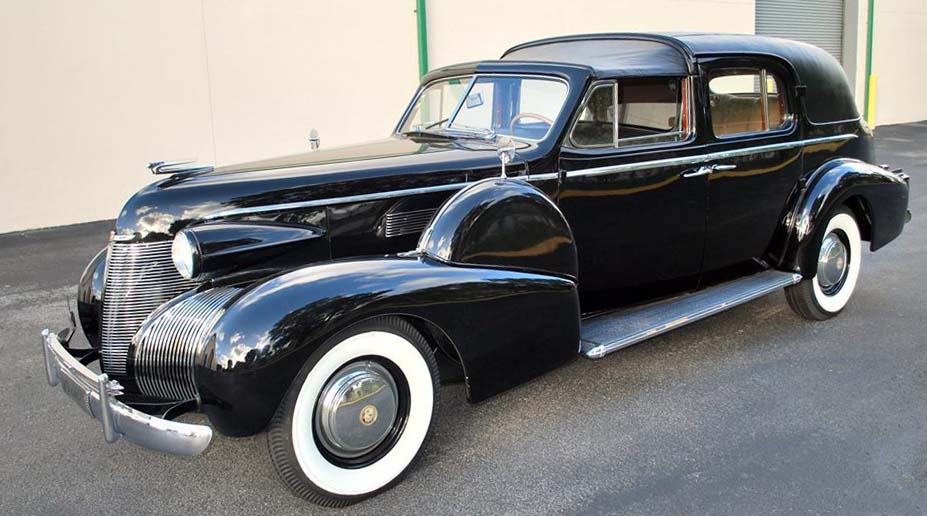
A fine survivor that turned up on Internet
in 2014
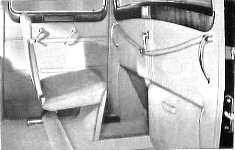 
Full-width auxiliary seats fold neatly into bulkhead;
leather canopy protects driver in inclement weather
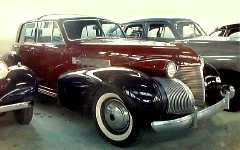
I photographed this survivor in Belgium's
National Automobile Museum, in the eighties
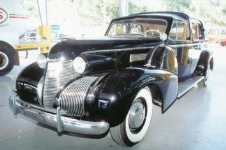 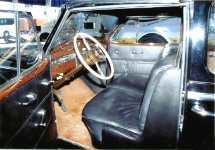
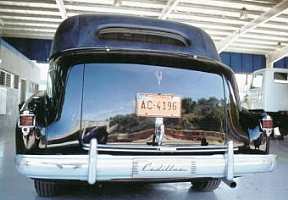 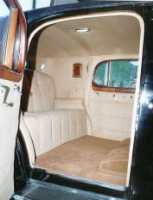
This one [possibly the same car, following a full
restoration]
was offered for sale on eBay in February, 2004
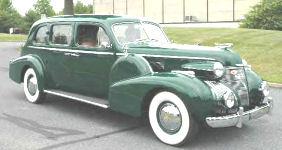
A Series 75 survivor, model unknown
[ Photo: © 2005 and courtesy Jim Butler, PA ]
|

Outwardly similar in appearance to styles #7533-F and #7559, this is style 7533-L,
a less elaborately finished formal car intended for livery use; only 2 were built
|
Series 75, bare chassis
141¼" wheel base chassis
Cadillac continued to supply bare chassis to
independent coach builders. In 1939, thirteen of them were delivered.
Series 75, Commercial chassis
161" wheel base chassis
Cadillac continued to supply the so-called
"commercial chassis" to independent coach builders of which the majority were in
the ambulance and funeral trades. In 1939, 28 of these chassis were delivered
Details
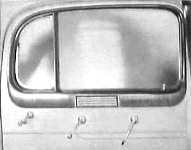 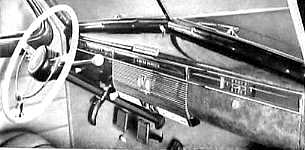 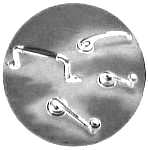
Inner door trim, instruments panel and hardware
details
|
Return to The
(New) Cadillac Database© Index
Page
or go back to the Cadillac photo index page to pick another
year
© 1996, Yann Saunders and the
Cadillac-LaSalle Club, Inc.,
[ Background image: two views of 1939 Cadillac front clip ]
